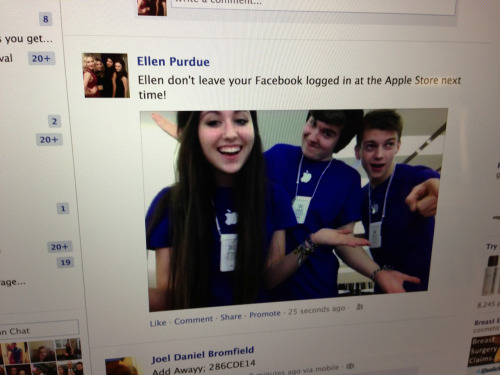
The FTC imposes a fine on a board game creator who failed to deliver their Kickstarter.
Developers publicly wring their hands about the reports of high refund rates on Steam.
Everyone looks to VR, but there’s already people asking whether it is a bubble.
What’s going on?
There are two business models: sell something in advance using promises, and persuade a lot of people who might not like a product a lot; or give the product cheaply and charge after the fact.
Here are some basic facts of life regarding these two models.
Selling in advance relies on persuading people who aren’t actually a great fit for the product that it is the best thing for them. This is the model that packaged goods have always used. The fact is that any given product is only perfect for a small percentage of its actual audience. Most of the others are more like 80% fits, or occasional users, or whatever. Few people need to buy a wood chipper; it’s smarter to rent one. Few people need to buy most things, actually.
The cheap to free model relies on the idea that you can give the product to a zillion people, and then get from them the amount of money they are actually willing to spend. It has the wonderful virtue that you get to extract small dollar amounts from people below the price sensitivity threshold of the packaged goods price. It has also revealed, in games anyway, that in practice, 95-99% of people think your game isn’t worth anything even if they play it every day. This model inevitably leads towards service businesses.
Of course, these two broad methods have a lot of gray area in between them. You have to sell people in advance on the idea of even trying your free product, for example. (If you want to learn more about how to “sell in advance” (which is also known as “marketing”) you can read this post of mine here.) Or, in the case of service businesses, we quickly find bundles and packages and service tiers, a way to sort of sneak in aspects of the packaged goods model into the other model. Either way, though, the pure fact is that capitalism often depends on getting people to pay for stuff they don’t really need.
To protect consumers, the “sell in advance” model typically offers refunds. However, refunds are often not available for goods which are consumed, easily copied, etc. It varies by jurisdiction. One doesn’t return a book, for example, because they didn’t like it. (There’s much chatter about Steam’s new policy being driven by the new EU rule on being able to “withdraw” from digital purchases within 14 days, but that’s actually a somewhat muddled thing and not as straightforward as “you can do refunds for 14 days, no questions asked.”)
The “sell for a price” business model learned over time that demos reduce sales. This may be because people find that they don’t like the game. It may also be because the typical player just doesn’t play a given game for very long. Metrics showed years ago that any AAA game longer than around eight hours was hugely overspending in content for the typical user, for example. This is why games started getting shorter.
Particularly narrative games, of course. Games with narrative have become, in aggregate, the largest segment of AAA. (Most all the FPS, action-adventure, and RPG categories are linear story games now, for a bunch of reasons which I recently wrote about).
As narrative games have grown, of course, some people have stories to tell that are by nature short. This is an artistic freedom thing, and also a response to changing markets that have, as technology has grown ubiquitous, made games accessible in really short sessions. One can debate pricing, of course, but…
In general, the industry has seen massive downwards price pressure. This pressure has hit mobile first, with the race to zero as the price point. The typical pay upfront game simply fails, period. Often regardless of quality, because the market is so glutted with free content that players don’t need to pay upfront for anything, really. At the same time, costs for quality, competitive content has risen as the market matures. (Costs at the low end haven’t, they’ve fallen. But basically, everything I wrote in this piece from ten years ago is still valid, and quite a lot of the predictions came true):
- The cost to consumers for a minute of content has been dropping steadily over time
- The cost to create and package a minute of content has been rising steadily over time.
…If there’s one thing that the Web makes possible, it’s enough content to make the typical content creator superfluous. Oh, plenty of people will be willing to play, read, or hear their content. The question isn’t whether they can find an audience — on the Internet, everyone can find an audience. No, the question is whether all forms of fixed content will effectively be donations to the common weal.
(For a more modern summary of the same phenomenon, try this excellent article here.) One result of this price pressure is the move to free to play. Without it, the median mobile game makes zero in revenue. A game that would have cost anywhere from $15 to $60 not long ago, like say a puzzle game, is now free or 99 cents.
Steam has been a bastion of higher prices that actually pay for development costs. That said, it has also experienced downwards price pressure, though less. The Steam sale’s about to start. We all know how that goes. If Steam succumbs to the same trend as mobile, the only financially viable games will be the free to play ones and the genres that fit that model.
This is all a natural business evolution, and dev, pubs, and yes, players, are all complicit in it.
That said, the reason devs are worried by the refunds is because there are many verified reports of refunds being given for games played
- for longer than two hours
- for longer than two weeks
This might just be a shakedown period though. So there is a lot of wait and see going on. Reports between devs to date do in fact have lots of cases of 30% returns cited as a figure (which to be clear, is a recipe for bankruptcy), but there are also others saying they haven’t seen an impact.
Lastly, the concern about people demanding refunds for short games is a very real fear. Or for games that they just didn’t like. Refunds for disliking content as opposed to lack of functionality (like say, not working on your computer) is new territory for the industry as a whole. It definitely undermines the “upfront sale” model fairly dramatically if the percentage turns out to be more than a couple of percentage points.
A lot of devs do not want to move to free to play models. They see it as a far greater threat to ethical and creative game design than most anything else. So high refund rates combined with rapidly rising budgets and downwards price pressure raises a lot of fears about margins and sustainability.
For many, the way in which they thought they could evade this and go straight to the “thousand true fans” was to use Kickstarter. Kickstarter basically is a way to reach the (relatively few) people who do actually love your product idea, and do pre-sales on them so that you can build it in the first place rather than financing it out of pocket. All of the marketing costs remain intact. Basically, it means Kickstarter is strongly tilted towards “incumbents” of various stripes. Worse, we see some of the remaining “sell in advance” companies using Kickstarter as market validation before taking on publishing roles.
And of course, there’s that whole “risks” section. Kickstarter lets you pre-order so far in advance that the risk is always very high. It turns out that a lot of consumers don’t like these risks. The way-early reveals are basically showing the world how much gets cut from a typical game product, and all of a sudden it seems like you’re getting ripped off. In some cases, you might be.
So everyone turns their eyes towards a new step in the lifecycle: a new platform. Sure, plenty of people are excited by VR because of its promise in terms of creativity, immersion, and plain technological coolness. But… Just so we’re clear, we’re talking about a device that
- requires a PC fewer and fewer people have, and can’t use the PCs most people are getting (laptops)
- has a relatively high dev barrier to entry to make content that doesn’t cause actual physical illness
- cannot run the sort of content the people who have high end PCs want (high-speed visceral content) because it causes actual physical illness
- causes actual physical illness in an apparently irreducible substantial fraction of the population
- is being marketed around a standing experience that has serious risk of serious bodily harm and requires a large empty space few consumers have
- requires mass market adoption to succeed
- is actually best experienced sitting down watching a movie
I think it’s fair to make the case that the message is muddled, and I say that as someone who is a believer in VR!
Two clearer messages:
- “this is a high end luxury thing for core gamers with non-traditional tastes, and someday it will lead to something cooler.”
- “This is a mass market device for the best movie-watching and virtual tour/visit experience EVAR.”
This article comparing VR to swimming pools was suggesting message #1. I think message #2 is probably more honest in some ways, but it of course alienates the early adopters who are driving the tech — and the path to the mass market lies through them.
In either case, though, it doesn’t look to me, at least, like the new platform is going to reset development costs by a large enough degree to make it a green field for low-end development.
So what happens in maturing markets? Well, smart distributors find ways to keep their top content providers hungry and their top charts varied by engaging in ever-heavier curatorial practices. Unsurprisingly, Apple just switched their App Store to a much more curated model. Curation has biases too: personal relationships, whatever favors the platform owner’s marketing story, high budget and polish.
So where does it leave us?
Refunds aren’t a bad thing. Devs are right to be concerned until there’s more data. Steam is probably watching their data very closely. The race to zero continues. The market value of entertainment continues to fall. A lot of small or midsize devs are going to fold or be bought. I don’t see a platform shift that saves the low end anytime soon. This also means now’s the right time to be building personal audience connections and the skills that go with it. And to learn to run very lean. Or alternatively, to go pile up large buckets of money from some source and shoot bigger: right now, money can be had, for the right dream. Oh, and master the service skills, because the sell-in-advance model is looking sickly. And the marketing skills, so you can persuade the curators you are worthy, because we are basically back to an editorially controlled world.
It’s easy to read change as negative. But change is change. If anything, the new landscape probably makes many folks who are more comfortable in the big business side of things very happy, just because it’s a familiar landscape.








































